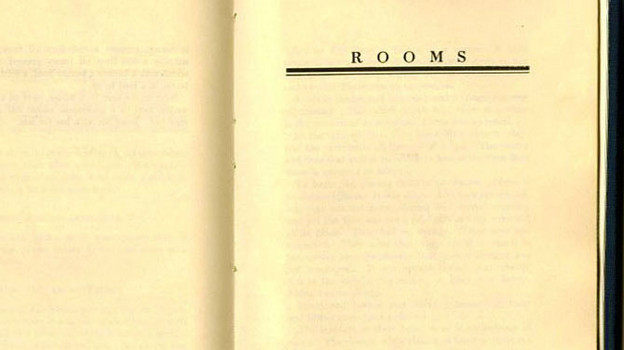Stein's spatial poetics
Star-light and 'Rooms'

Gaston Bachelard writes in The Poetics of Space:
Space that has been seized upon by the imagination cannot remain indifferent space subject to the measures and estimates of the surveyor. It has been lived in, not in its positivity, but with all the partiality of the imagination. Particularly, it nearly always exercises an attraction. For it concentrates being within limits that protect.
Published nearly half a century before Gaston Bachelard’s study of inhabited space, Stein rendered a vigorous statement on spatial poetics through Tender Buttons. In it, shereminds us that to dwell in a place requires and engages our intelligence: to live in and occupy a space is already a kind of knowing. And, delightfully, though Stein’s knowing occurs on site, it both accomplishes and trespasses against what the space may contain. A space is an occasion is an activity, not merely nouns. It invites our authorship as we convene.
In “Rooms,” she announces her foray into this spatiality: “Act so that there is no use in a centre. A wide action is not a width.” These abstractions indicate her philosophical examination of what constitutes “rooms” to us. They emerge as a broad sparkling array. Her attention alights seamlessly from content to commentary to metacommentary. And with such delight.
Her reorientations may prove disorienting for those expecting or desirous of more traditional mappings rendered in what we otherwise call “description.” But by inviting us to imagine rooms as an intelligent activity, and by modeling this engagement for us, Stein transforms them into intimate ecologies — populated, vertiginious, arcing presences that speak with her and in their own names.
My favorite moment in “Rooms” is nested in her discussion of windows. She wonders at them, and we can track how her attention moves from the window itself to the curtain clothing it, to the voices and street sounds and light that pour through.
Star-light, what is star-light, star-light is a little light that is not always mentioned with the sun, it is mentioned with the moon and the sun, it is mixed up with the rest of the time.
This particular sentence resonates quite strongly with me from a personal standpoint, since I have been increasingly invested in trying to accomplish a solar intelligence within my body. Starlight and sunlight are of the same, and yet we forget this because of its dark inhabitance. Starlight is indeed mixed up with the sun the rest of the time. It is always speaking into us, and yet we rarely note — or make mention of — this fact. The distinction between starlight and sunlight is a question of time and perception, which she renders so beautifully: “Why is the name changed. The name is changed because in the little space there is a tree, in some space there are no trees, in every space there is a hint of more, all this causes the decision.”
If I open myself to the light that is constant while noting the inconstancy and fleetness of my perception, I believe I may begin to sharpen and see the world anew. It perhaps requires me to relinquish some commonplace assumptions. I must “act so that there is no use in a centre”?